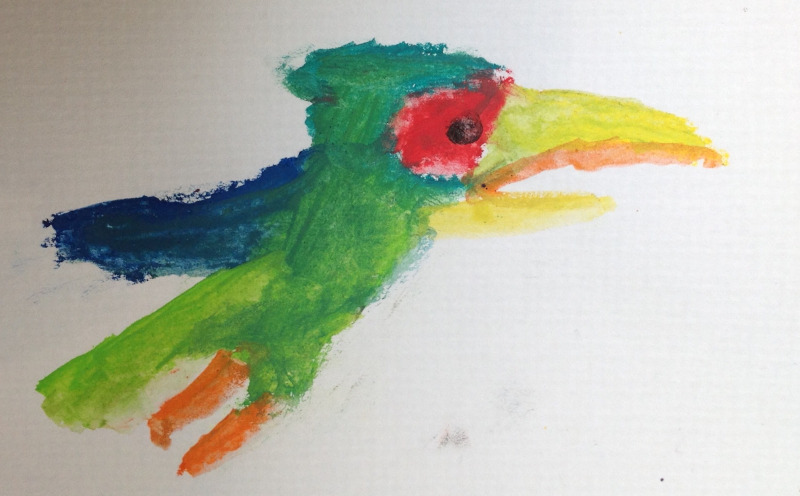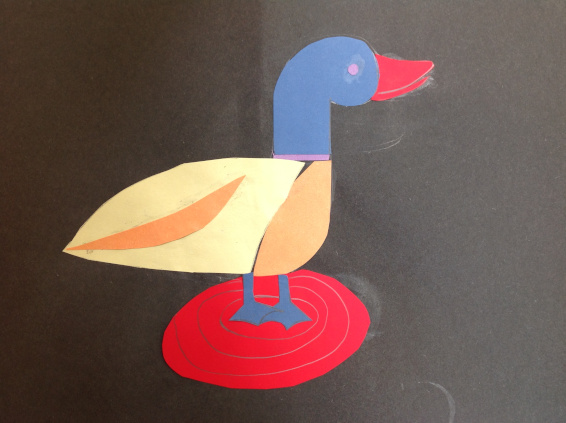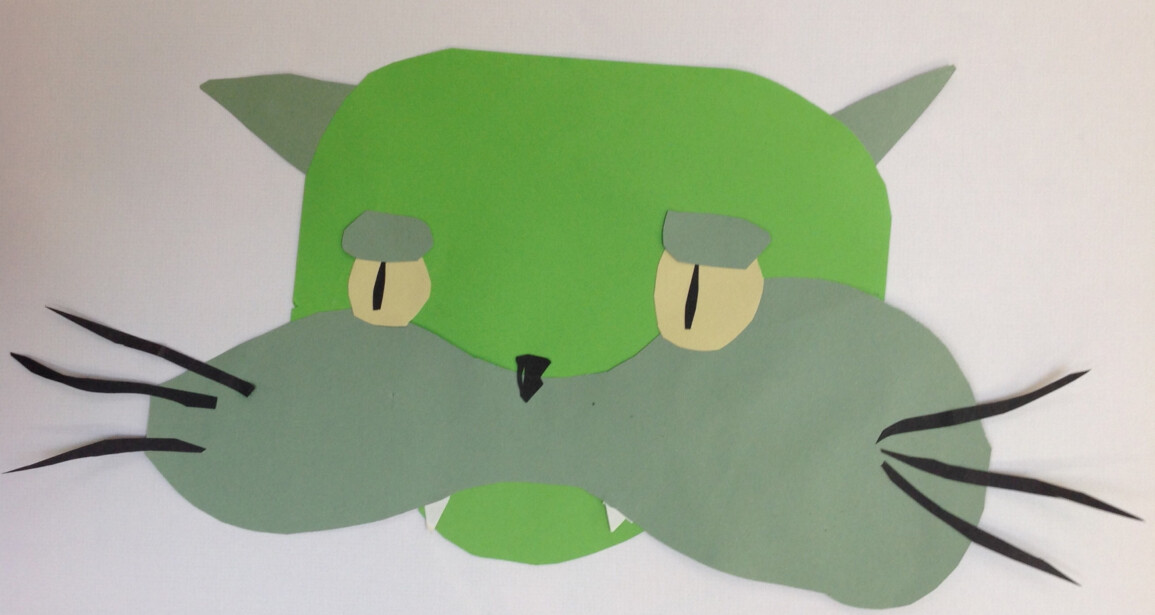We had lots of holiday fun during the October half term. The kids tried their hands at moving animals, styrofoam prints, book cover illustrations, bike parts sculptures and animations!


We had lots of holiday fun during the October half term. The kids tried their hands at moving animals, styrofoam prints, book cover illustrations, bike parts sculptures and animations!

This week we tackled autumn leaves in watercolours. They really are the most beautiful subject, i think, and perfect for this tricky medium. There are techniques for all levels from patient layering, fluid experimentation to even printing with the leaves (and combining all these as well!). Really the only proper rule is to start with the light colours first. The beauty of watercolour is all about letting the white of the paper shine through, thereby utilising their amazing, and unique, transparency. Then you…

This week we had great fun designing and making stencils. Using craft knives very carefully and either card or acetate the kids made really fun and interesting stencils, which they then worked with very imaginatively – working out how they could overlap as well as playing with the colours (high contrast worked well) and the sponges on sticks we used were great to blend with. It’s a really versatile print making technique.

This week everyone was focused on making new lines – how by varying the implement, or how you hold and move it, you can convey different movements, emotions and feelings, even if drawing the same object, or none! To start with I asked everyone to work on the floor, in pastel or chalk and on big paper so they had to use their whole arm – not just their hands. Their task was to invent lines to convey different movements e.g ice skating,…

This lesson was all about frottage – that is rubbing. So of course the children scoured the studio looking for different textures to make rubbings from, and investigated how moving the paper while you rub can achieve interesting effects (especially over the edges of the tables). But in addition, I showed them another really easy printmaking technique based on rubbing where you cut out paper shapes, stick them (in layers if wanted) on a piece of paper to make a plate, and then…

Woo we are back – old and new faces, and a new class for teenagers! First week started irreverently with ‘updating’ (which could mean defacing) our collection of art magazines. I wanted the students to choose an image that resonated with them and find a way to change or update it. This could be with scissors, marker pen and/or the photocopier. Love what several did with splicing different images together (or the same one, changed) or using the photocopier to multiply the image.…

As autumn approaches I’ve been thinking back to the fun we had during the summer holiday classes. We sculpted, painted, constructed, drew, stamped, built, cut, stuck, collaged, printed… and more! Particularly loved the papier mache constructions so simple but effective. Make simple cardboard and/or newspaper base – we had a rabbit, a bus, a boat, a crown, a cake – it really can be anything as long as it’s stable enough – and then cover it in newspaper strips dipped in diluted PVA.…
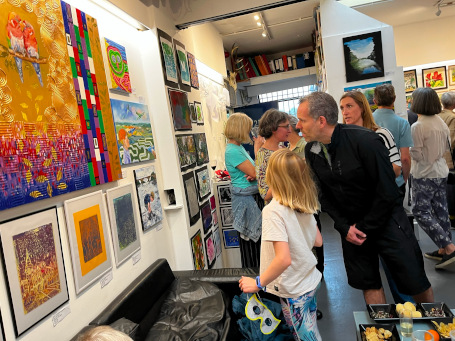
To showcase all we’ve achieved this past few years – both in person and online – we had a fantastic exhibition of art work by the adults and children who’ve been attending our art classes – supporting and being supported by Art CLASS London. It was a really lovely evening, full of joy and celebration, and a great chance for all our artists to meet and share their experiences and achievements. These kinds of events where artists can get together and not only…
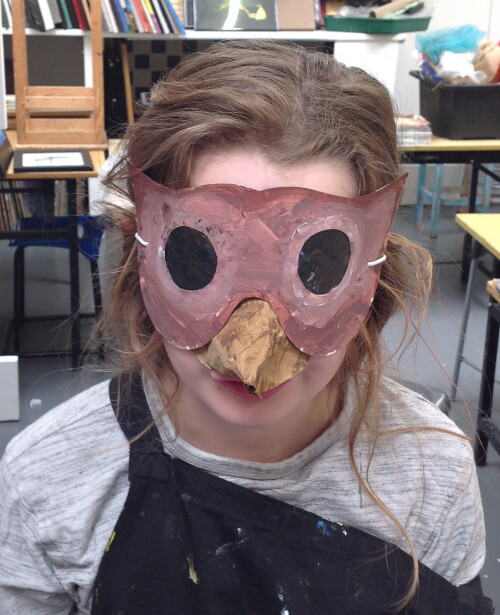
It was the last week of term this week so we made masks ready to wear for the end of term exhibition! We had templates to start with but many children decided against these weren’t the shapes they wanted and they needed to start from scratch. I’d provided lots of different materials to attach to them (sequins, feathers, cardboard packaging, patterned papers etc.) as well as paint. Some children even added sculptural elements like beaks and horns. The results were all so different…
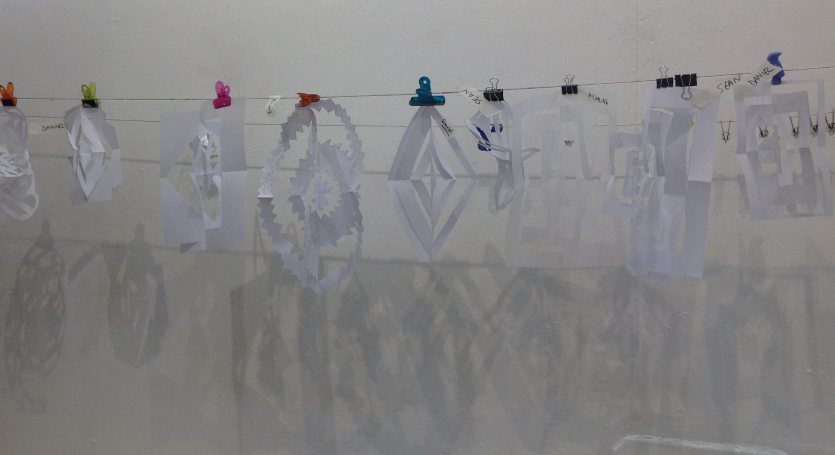
This week the challenge was to make sculptures out of some sheets of white paper (and some tracing paper for an interesting alternative). After demonstrating how to safely use scalpels I showed them some basic methods to start with, but many invented their own methods. No sellotape and only small amounts of glue were needed to make these intricate and delicate sculptures – some were creatures, some were abstract, all were beautiful. This was a challenge set by Josef Albers to his students…
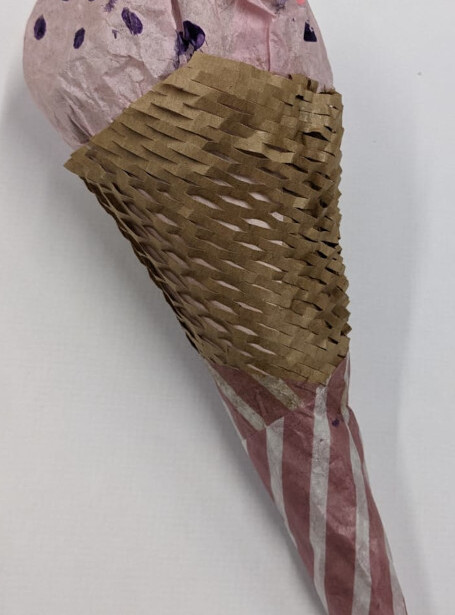
So this week I let the kids go wild with cardboard, glue and other assorted packaging! We first found a few basic ways of making the cardboard go high but stable (such as slits, flanges, stacks and bookends). And then the children went crazy with their sculptures and even inventions – see the happiness machine!
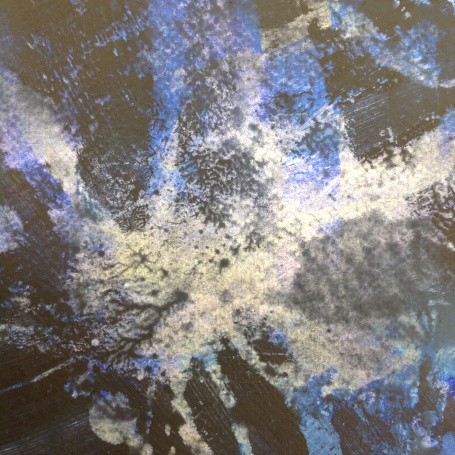
Now we have completed Mona Brookes’ drawing exercises (although of course everyone’s drawing will benefit from practicing them regularly!) we are moving onto working with much greater freedom and preparing for the end of term exhibition. So week 7 was all about painting but there was only one rule – no paintbrushes! Instead we had all manner of implements, many originally designed for cleaning! Including: scrapers, toothbrushes, combs, scourers, sponges, squeegees… The children were very inventive in their creations!
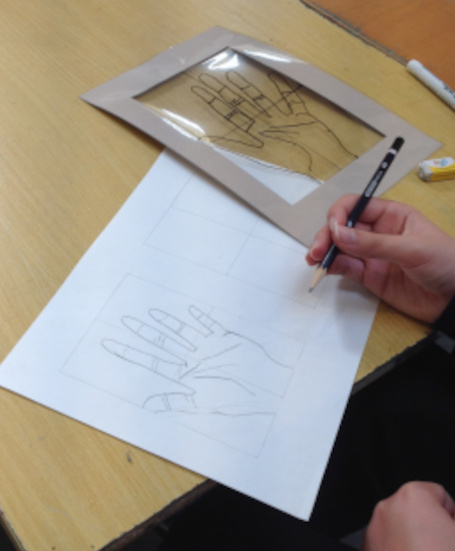
This week we tackled on of the tings people find hardest to draw – hands. But I had a trick to help – tracing our hand on a plastic viewfinder with a grid, and then using that to transpose the tracing onto a drawing. The principle is the same as in past weeks – break down what you are drawing into the basic lines and shapes, so you brain sees the lines not the complicated object. Easier said than done of course, but…
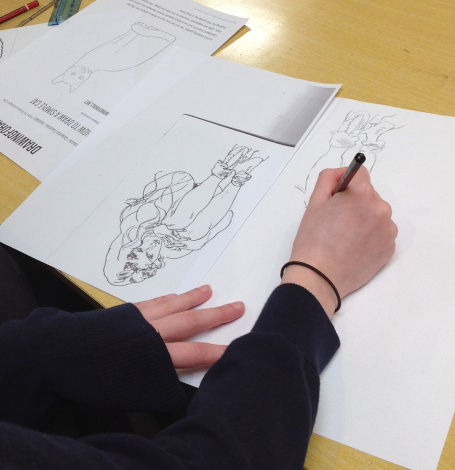
This week we tackled drawing upside down. The idea here is to try and disengage the thinking side of your brain and engage the visual. Often when we look we are scanning to take in everything that is there, recognising, categorising and interpreting it all. When it comes to drawing this doesn’t always help us because we are not looking at exactly what is there, we are trying to think about what is there. When we turn what we are trying to draw…

